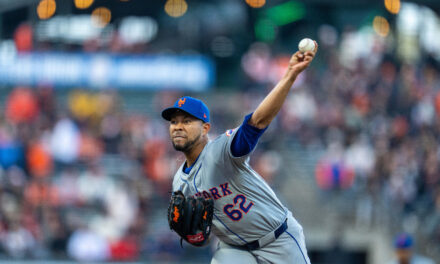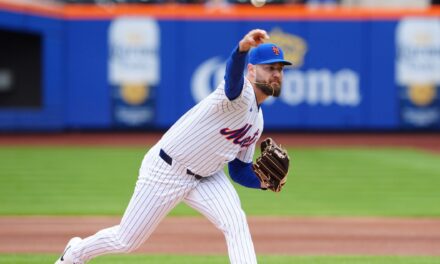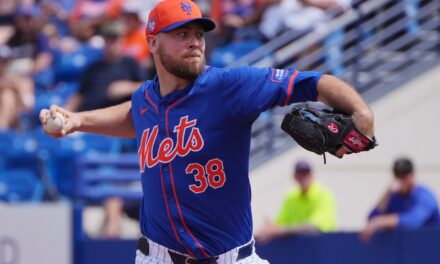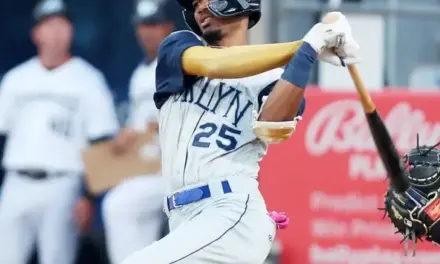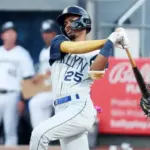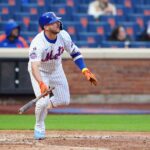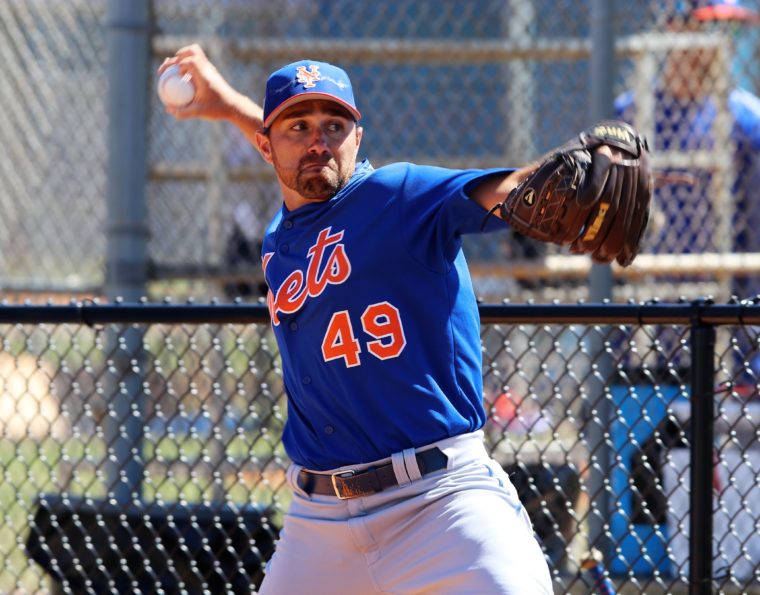
Photo by Ed Delany, MMO
This off-season, which already is nearly over, started like every other: scrambling for a job to bring in some money; savoring every minute with my wife, Emily, and family, and not letting up on my training. I’m still throwing my knuckleball every chance I get, even against my best friend, that brick wall.
I’m not haunted by the uncertainty I’ve felt in some previous off-seasons, wondering where the Spring will find me, whether I’ll find a place with a team that understands my knuckleball.
That changed after that 2014 season. I went home to Reno, Nev., wondering what I had to do to be seen more, to get my name out there. I decided to head to the MLB Winter Meetings in San Diego and try to make connections and meet everyone I could. It turned out to be a great decision. I got connected to a pitching coach who wanted to work with me. He supported my decision to add the knuckleball to my repertoire.
With his help, I made one minor change in my mechanics that took me to the next level. With a little tinkering, I began keeping my glove arm up longer, which prevented me from flying open. It resulted in being more consistent in the strike zone. After I went home, I threw the ball pretty much at any wall I could find. Usually I headed to an elementary school about a mile away and threw and threw and threw, just building muscle memory.
In January I headed back to San Diego to continue working with that pitching coach. He set up a bullpen for me in front of a Baltimore Orioles scout. This was the first time I met with a scout individually. He appeared to have liked me but his perception of the knuckleball, based on pitchers who previously threw it, was that it should be thrown slower than what I threw it at. Knuckleball pitchers in the past threw around 65 mph, but I threw mine around 78-82 mph, closer to R.A. Dickey’s style.
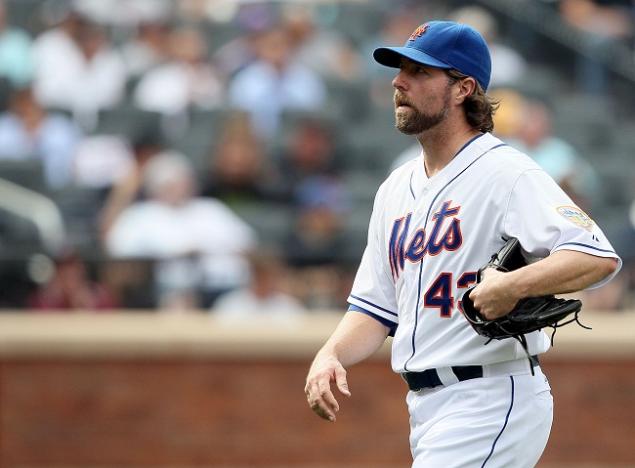
With Dickey winning the Cy Young in 2012, I felt his fast knuckleball opened eyes to how effective the faster knuckleball can be in today’s game. That was followed in 2015 by Steven Wright with the Red Sox, who also throws a faster knuckleball.
While I was in San Diego, I received an invite from an Arizona Diamondbacks scout to attend a tryout prior to spring training. I really felt like this would be my big break. I went to the tryout in Arizona and threw really well but never heard from the Diamondbacks again. The good thing that came from the tryout was that I met my future wife.
I ended up staying in Arizona for three weeks, making calls and sending emails. The Colorado Rockies were the only ones that returned my call. They said, go to Independent ball, put up good numbers, and that will give yourself a chance to get back to affiliated baseball. That’s the best thing you can do. I re-signed with the Southern Maryland Blue Clubs, only to get traded two days later to the Long Island Ducks before the season started.
This ended up being a great move for me. I clicked with the coaching staff right away. They were letting me pitch whenever I wanted. I’d throw 120 pitches in a start, then two days later pitch an inning out of the bullpen, then start again two days later and throw another 120 pitches. It was the first time a team was letting me do what I thought I could do: start and relief, start and relief. I had so many opportunities to pitch in games that I found a groove and was completely locked in. Mixing in my fastball/slider combination along with my faster knuckleball confused batters. Teams had no idea what pitch was coming when I was on the mound.
It was midseason and the all-star break was approaching. I was throwing well up to this point, and my 1.19 ERA was proof. Again, I began thinking to myself, is this good enough to earn me a shot in affiliated ball again? Will a team take a chance on me?
Following a game, I was sitting in the clubhouse talking to the guys, eating my post-game meal. The manager came up to me, “Hey, Mickey, can I see you in the office?” The guys were starting yelling for me—”This has to be it.” The manager put a number on a piece of paper and gave it to me. It was the Mets’ Minor League Director of Player Development. I went outside and gave him a call, but he didn’t answer. Shortly after he sent me a text saying he was in the subway. Ten minutes later, he calls me and said, “We’ve got an opening in ‘high A,’ and it’s yours if you want it.” I’m pretty sure I said “yes” before he said hello. I left early the next day for Port St. Lucie, Fla. I felt relieved–I’m getting a chance again, finally.
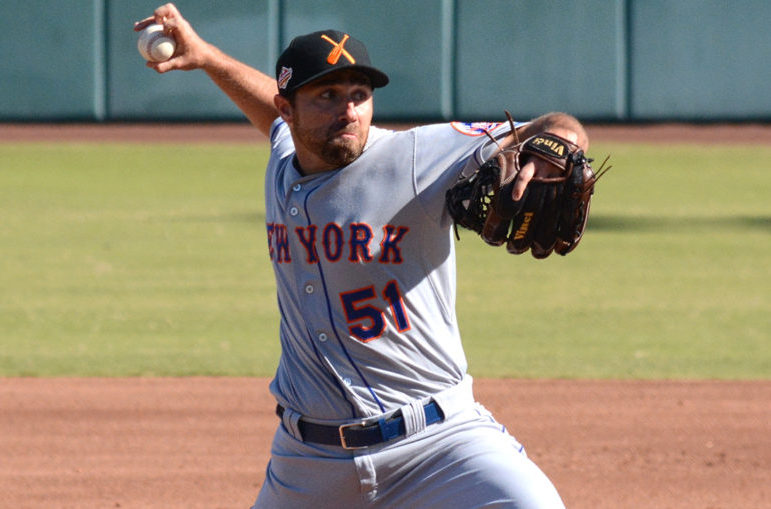
Photo courtesy of MLB.com
After a month in High-A I earned a promotion to Double-A in Binghamton, N.Y., to finish out the season. The last week of the regular season, the manager called me in and said, “Would you like to pitch in the Arizona Fall League?” I thought that was special, my season coming full circle. From an unsuccessful tryout in Arizona to Independent ball, to signing with the Mets, and now being invited to compete against and play with some of the top prospects in all of minor league baseball, back in Arizona.
I returned to Binghamton Mets—now the Binghamton Rumble Ponies—for 2016, 2017, and 2018. The 2016 season, my first full season with the organization, was by far my toughest. The pitching coordinator at the time worked with me to mirror R.A. Dickey, mechanics-wise, but it just didn’t work for me. Walks came back in bunches, followed by hits that sent innings spiraling out of control. The good bullpen sessions I had weren’t transitioning to the games.
I became a total knuckleball pitcher, which wasn’t my game. (I consider myself a pitcher who throws a knuckleball–not a knuckleball pitcher). I was demoted back to High-A to work on my game. That didn’t go much better, however I was promoted back to Double-A before the season ended. Finishing out that season, doubts filled my head. I began thinking I might have ruined my second chance at affiliated baseball.
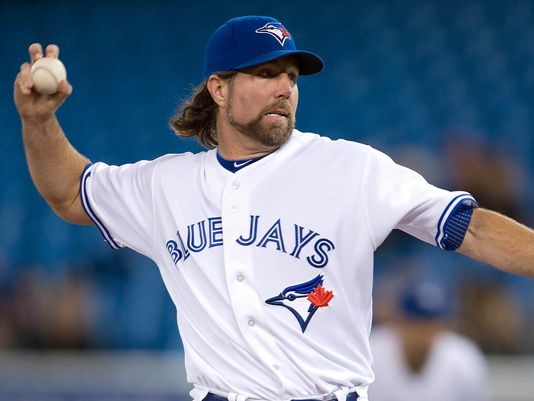
USA Today
That off-season I decided to combine pieces of my old mechanics with those of Dickey’s. I worked tirelessly to perfect my new mechanics, knowing I had to prove myself after an unimpressive 2016 season. I also decided to add back in more fastballs and sliders along with my knuckleball to keep hitters off balance, going back to what proved successful while with the Long Island Ducks. By the 2017 season’s second half I found my groove again and earned another invite to the Arizona Fall League. This time I was living in Arizona, preparing to get married. The timing was perfect.
In 2018, I earned a spot in the starting rotation for Triple-A, Las Vegas, but quickly was sent back to Binghamton. Now more comfortable with my mechanics from the year before, I began the season throwing more strikes than ever. However, more pitches in the strike zone meant more pitches for the hitters to make contact with, and that translated into more hits given up. I knew I was on the right track though, as I saw my walks decrease and my strike-outs increase. Heading into the all-star break I became increasingly confident with my fastball/slider and knuckleball combination. This carried over into the second half when I finished with the best overall season of my career.
Excited to get going again, I’m leaving Arizona soon to head back to Port St. Lucie for my fourth spring training with the Mets. I hope to build off of my success from last season and earn another chance at Triple-A, and with any luck, the major leagues.
Throughout my journey, there have been so many ups and downs, but giving up on myself or my ability to pitch, never occurred to me. After all, they say “knuckleball” pitchers get better with age.


